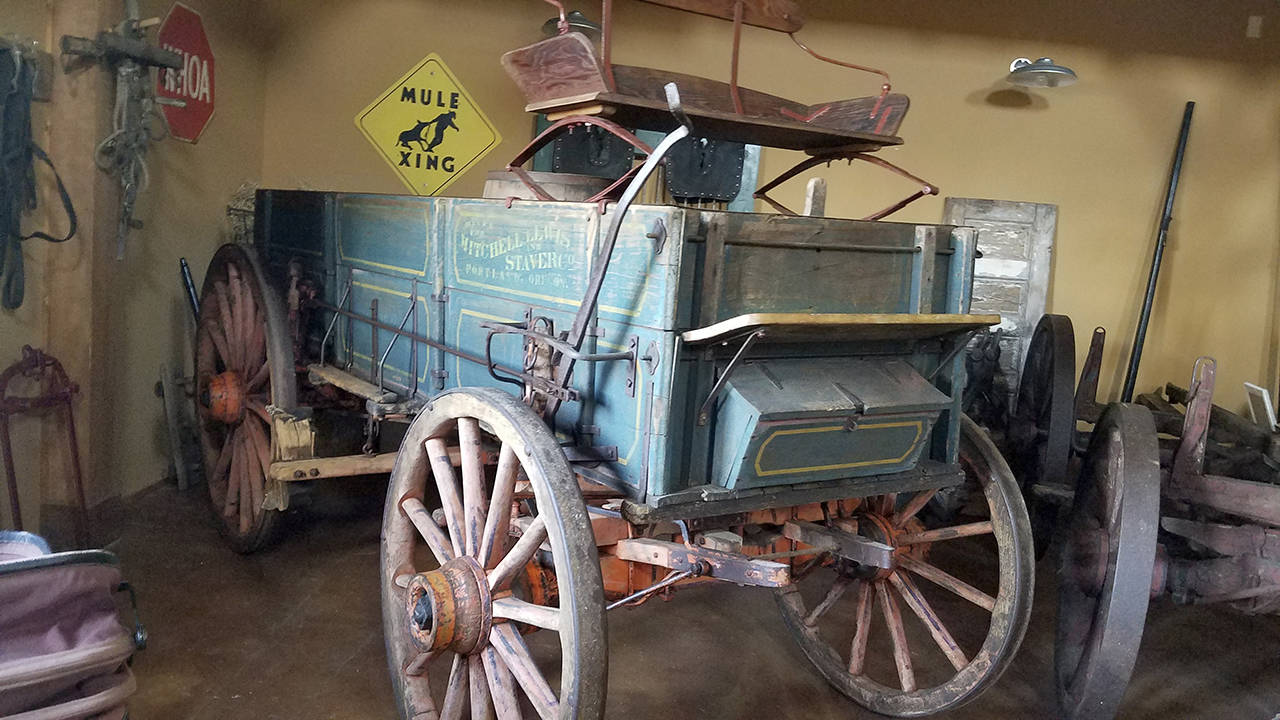By Mary Cooley
Northwest Carriage Museum
The Northwest Carriage Museum has acquired an 1892 Mitchell farm wagon in original condition, including paint, pinstriping and seller logo.
The Raymond museum is the third owner of the vehicle, receiving it from a family who’d had it since the 1950s. They bought it from the original farmer who used it near Castle Rock.
The restoration was completed by museum Curator Jerry Bowman, who talked about the process:
What’s the history
of the manufacturer?
The Mitchell Wagon Co. was based in Racine, Wisconsin, and got its start around 1834. They built a variety of farm, freight, stage and spring wagons along with buggies, hitch wagons and delivery wagons. Officially, the company incorporated in 1855; and in 1864, owner Henry Mitchell joined forces with son-in-law William Lewis to form the Mitchell Lewis Wagon Co.
Over the years, Mitchell/Lewis was very successful, and in 1903 the company started making very elegant automobiles. By 1911, Mitchell/Lewis was Racine’s largest employer and was sold to the John Deere Co., which produced their wagons for several more decades.
How did you acquire
the Mitchell?
Last year, our museum hosted a large Franklin Car Club group that was having their annual meeting in Long Beach. We had a great tour with over 100 people, one of which lived in Port Angeles and had the wagon. Several weeks after the tour, he contacted us to see if we had an interest. The wagon had been in his family for 61 years and they purchased it from the original owner, who bought it in 1892 in Portland, Oregon.
What did you do
to restore it?
The wagon was in good shape considering its age and usage. After a good cleaning, all the metal was buffed using a wire wheel, the wood was gone over with a very fine steel wool and toothbrush using a turpentine solution. We were very careful to not harm the original paint, which had oxidized over the years. The sideboards, because of the oxidation, were a turquoise color. After restoration, they are now a dark green with pinstriping and the original seller logo coming through. The running gear and wheels were white. Using the same process, they are now orange with blue pinstriping. … The entire wagon was carefully painted with a linseed oil and turpentine solution. This process is how we restore the original colors.
There was damage to the toe board and rear tailgate. These pieces were replaced and two new original box rods had to be found in Texas. We also did some repair to the brake, had to rebend some metal and reconnect the beam to the hanger brackets.
During the restoration process, we found stenciled writing on the running gear which said “Jacobson” and “Sandy Bend.” In doing research with the family we got the wagon from, we found that Jacobson was the family name of the original farmer who bought the wagon in 1892, and Sandy Bend is an area about 3 miles from Castle Rock, where both farms were located.
Is the museum still seeking more vehicles?
Actually, because of our reputation around the country, these vehicles find us now. I get numerous calls every month from all over the county regarding restoration and historical information. We are able to refer people to various contacts for parts, wheelwrights, etc. Many of these calls turn into donations for the museum.
Our museum opened in 2002 with 21 vehicles. With the Mitchell wagon now on display, we currently have 51 vehicles in the museum; 52 and 53 are currently in my shop.
Mary Cooley is associate director of the Northwest Carriage Museum. For more information, visit www.nwcarriagemuseum.org or call 360-942-4150.



